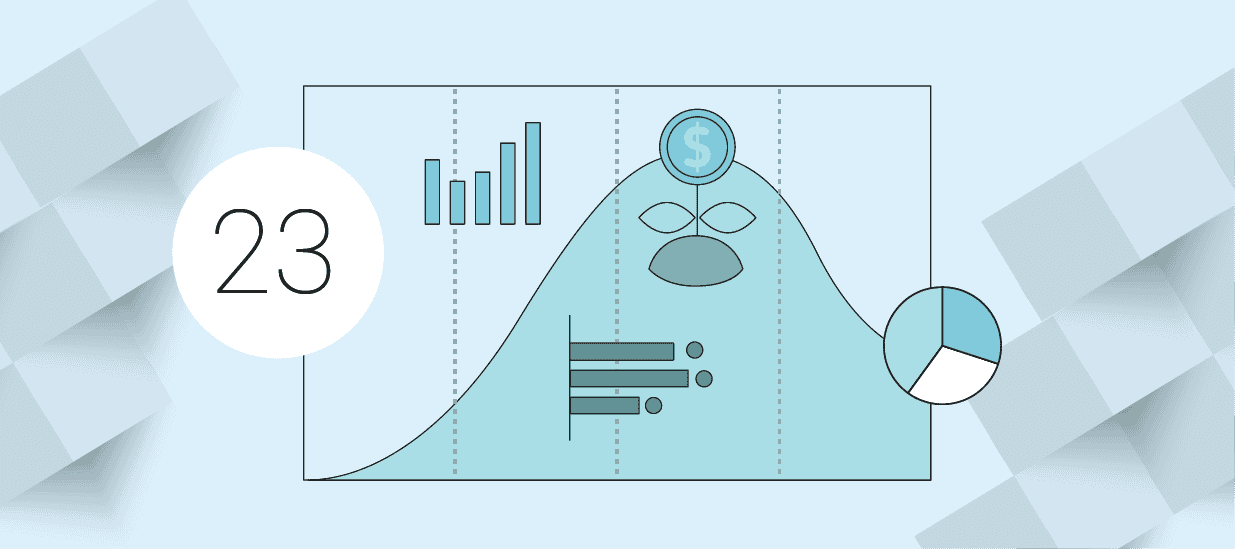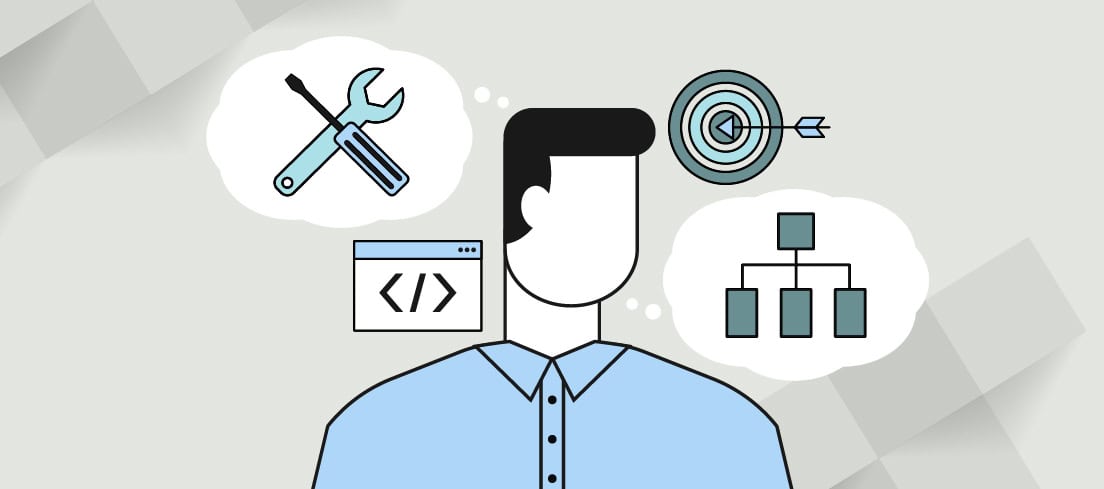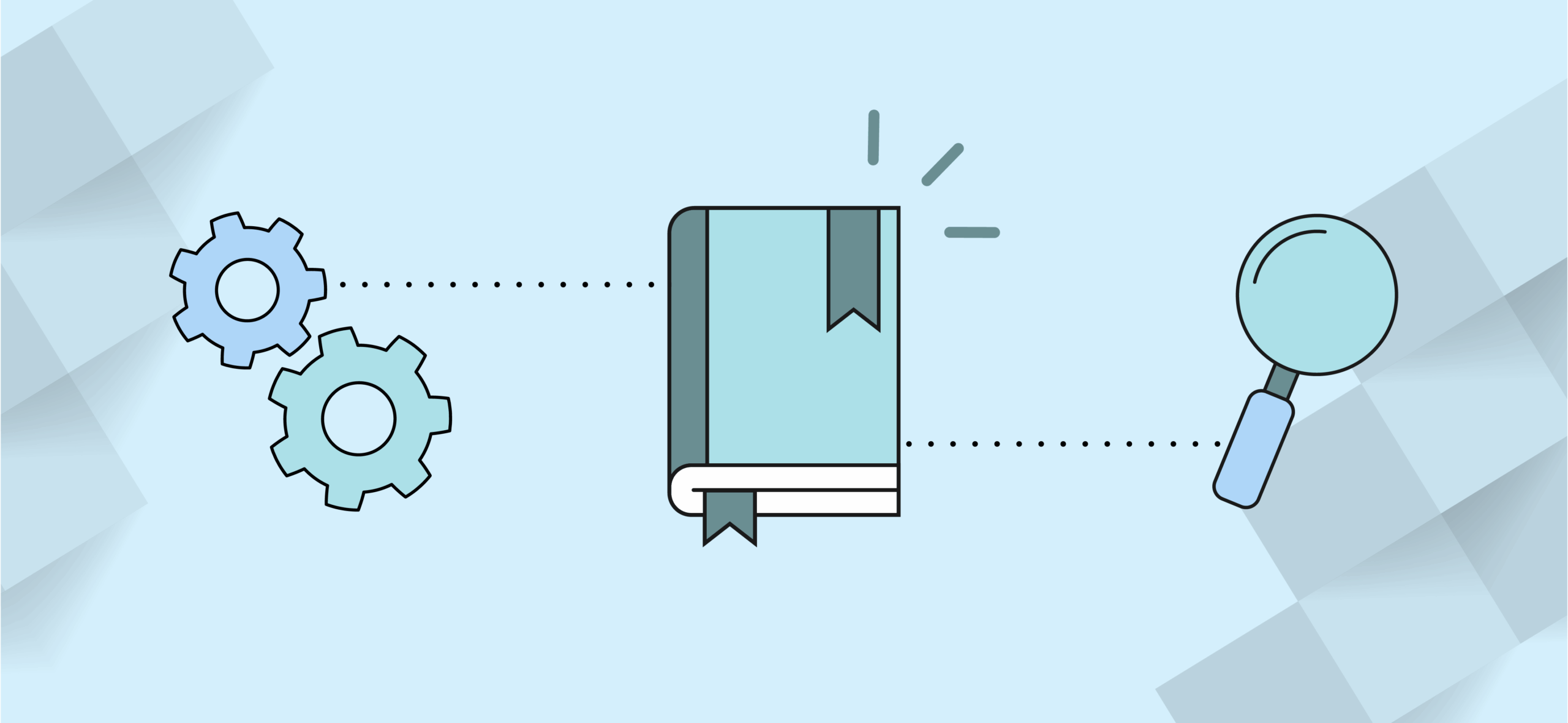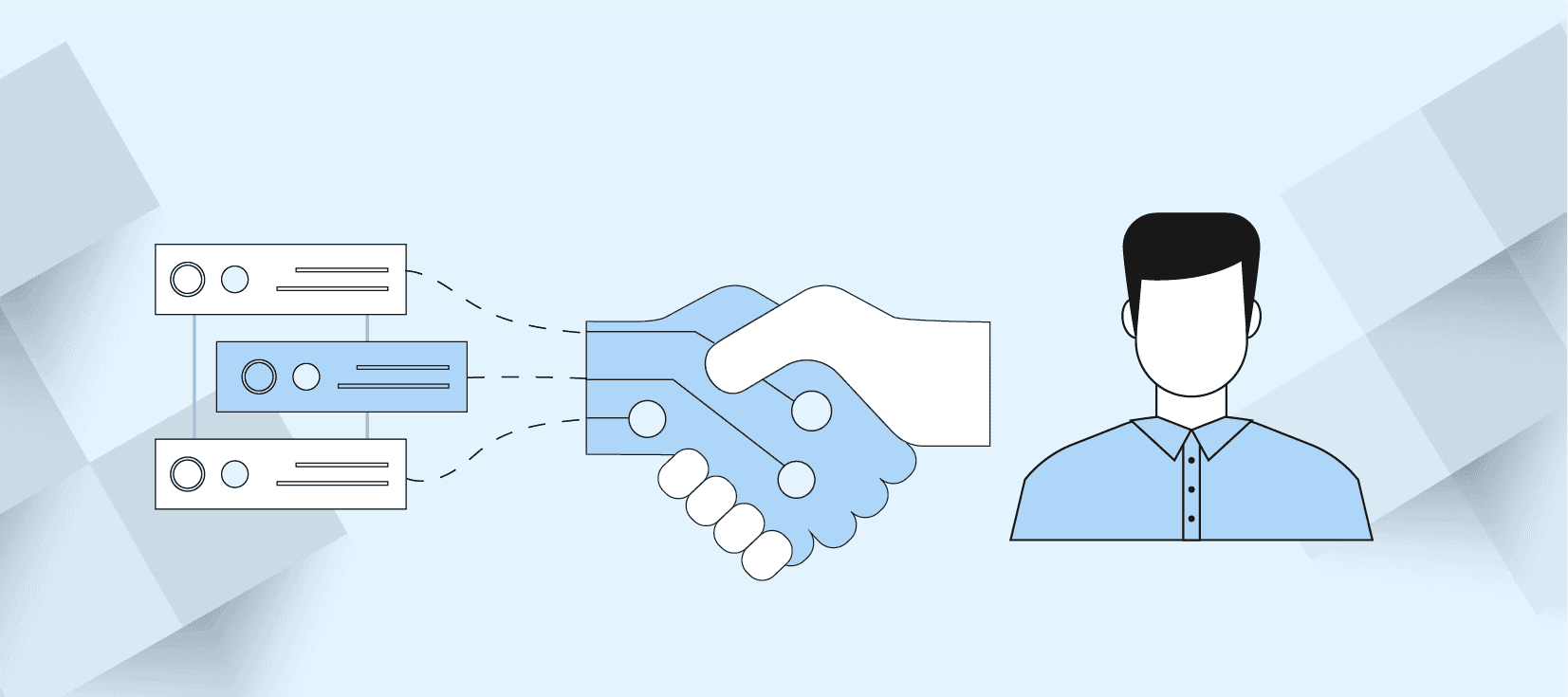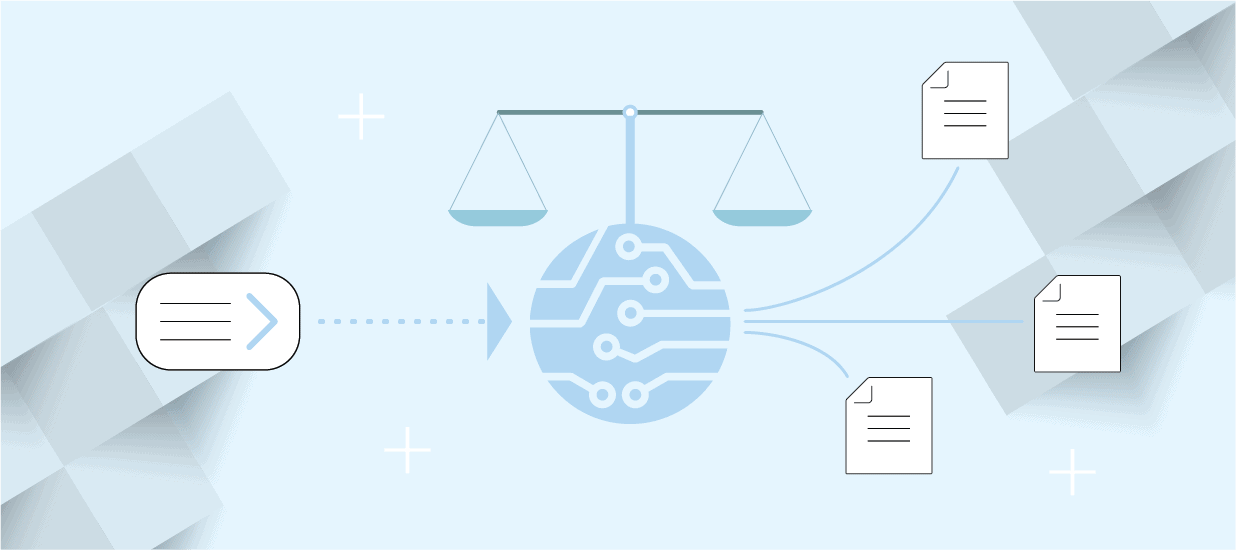8 minute read
Former Facebook product leader discusses 23 product metrics needed to navigate through all stages of the product life cycle, from development to decline. Presentation included.
Product metrics are often seen as one of the most fascinating yet intimidating aspects of the product discipline. Expert product leader, Anand Arivukkarasu, formerly of Facebook, believes that you can use metrics to ensure success throughout every stage of the product lifecycle if you understand which key KPIs and metrics you need to look at during each stage of development, how to use metrics to gain buy in, and how to gain useful insights from metrics.
Learn how you do it in this insightful article and listen to Arivukkarasu’s presentation by following the link at the bottom.
Start from the beginning or skip to the section that interests you the most:
- Product life cycle stages
- How do you know the life cycle stage of a product
- Product mission vs business objective
- Measuring the development stage
- Measuring the launch phase
- Quick guide on how to measure product-market fit
- Measuring the growth phase
- Measuring the maturity phase
- Measuring the decline phase
Product Life Cycle Stages
The product life cycle stages are development, launch, growth, maturity and decline. After launch, you’ll focus on product-market fit, where your product meets a genuine need for your target market. You’ll know you’ve achieved product-market fit when you see consistent, sustainable growth in your user base and/or revenue. Once you capture a certain percentage of the market and reach product maturity, you’ll start seeing a decline.
There are a lot of practical implementations of this model in your day-to-day product life.
However, this is a theoretical model. Depending on the product, the cycle might look different. Some products go into the growth phase and then quickly decline. Others enter the maturity phase, develop new features, and then have another acceleration. Also, the timeline will vary by product.
How Do You Know the Life Cycle Stage of Your Product?
One way to determine the life cycle stage of your product is by examining your user adoption patterns. Specifically, if you have early adopters who are enthusiastically adopting and using your product, this is often an indication that your product is still in its launch phase. At this point, you’re iterating and leveraging these early adopters to learn and understand whether a particular target segment values the features you’ve launched.
A sign that your product is in the marketing phase is if your user base is growing more quickly and steadily, indicating that you are attracting new users who may not have been aware of or interested in your product previously. In contrast, a gradual decrease in activity among your users over time may indicate that your product has entered the maturity or decline phases of its lifecycle.
There are many nuances in determining your product’s life cycle stage. If you’re a SaaS company focused on subscriptions, the parameters you use to determine the product life cycle stages will look different than if you’re a B2C company.
Product Mission vs. Business Objective
A product mission is the foundational purpose of your product – what user segment does it help, or where does it provide value? What unique problems does it solve? What differentiation does it have? A product mission doesn’t change over the product life cycle.
In contrast, a business objective is what the business wants the product to focus on at any given time in the product life cycle. A business objective can change depending on the life cycle stage, quarter or year. For example, during a product’s launch stage, the objective might be to gain market share. Later, after the product has established itself in the market, the objective might switch to maximizing profitability.
Measuring the Development Stage
In the development stage, you work as a problem owner or product owner. You aim to prioritize the right user problems and build a viable solution. You’ll work closely with your design and development teams to provide prioritized user problems and user stories and brainstorm solutions.
Metrics and KPIs for this phase include:
1. On-Time Delivery (OTD) measures how many product backlog items are completed out of all the planned items within an iteration/sprint.
2. Team Velocity is a metric used to measure a product, development and design team’s delivery speed for a given cycle. Agile teams typically calculate the velocity at the end of a sprint or iteration.
The other thing you should also be looking at is the quality of the product that’s getting released. You should be working closely with the QA or testing teams to understand how good the quality of this product is, how many bugs are being written and the bug rate.
Measuring the Launch Phase
The objective in this phase is to achieve product-market fit. You should take into account all the work you’ve done and determine if you’re creating value for the user. Is the product delighting the user? Is the product distinguished from the competition enough that you can achieve sustainable monetization?
Your goal is to become a user expert. In this phase, you should understand who is using the product and which aspects of the product resonate the most. You must also capture new user insights and iterate on product features to get product-market fit.
User engagement is key to a successful product. You need to make sure that users are finding value in your product, or you will end up with a leaky bucket problem where users keep coming in and then leaving without finding value.
Engagement and adoption are important key metrics to look at when determining the success of a product. However, qualitative data should also be considered to get a complete picture. This includes customer satisfaction ratings and net promoter scores. Understanding how users feel about a product’s features and the overall experience is crucial in determining its success.
Metrics and KPIs for this phase include:
3. User Engagement measures how many users are finding depth value
4. User Conversion measures how many visitors have signed up
5. Feature Adoption and Usage Metrics to determine which features are the highest value
6. Net Promoter Score (NPS) is a measure of customer loyalty that asks customers how likely they are to recommend a company’s products or services to their friends or family. The score is calculated by subtracting the percentage of detractors (customers who answered with a 6 or lower on a 1-10 scale) from the percentage of promoters (customers who answered with a 9 or 10).
7. Customer Satisfaction Score (CSAT) measures customers’ satisfaction with a particular product or service. Customers are asked to rate their satisfaction on a scale from 1 to 10, with 10 being the most satisfied.
8. Product-Market Fit Criteria (this is a big one, so see next section for strategies to measure product market fit)
A Quick Guide on How to Measure Product-Market Fit
Product market fit is how well you can serve the target customers or target users with the solutions that you have built. The earliest indicator of product-market fit is engagement.
However, there are several other methods you could employ to measure product-market fit:
9. Sean Ellis Survey Method aims to determine how many of your active users would be disappointed if the product were no longer available. To do this, you survey your active users, and you’re looking for 40% of them to say they would be disappointed without the product.
10. Cohort Retention Rate is the percentage of cohort members who return to a product or service after a given time period. Typically a good number is 10% to 11% return regularly.
11. Net Promoter Score > 30 means that the company has a very strong customer base, with a high proportion of customers who are likely to recommend the company to others.
12. 30% Referral Method means 30% of the engaged users have recommended the product at least once to others.
Learn more about user experience scoring options here.
Measuring the Growth Phase
The core objective in this phase is to continuously mine data to uncover patterns and gain insights to gain market share. Your focus should be to support the activation of more users by applying a product growth strategy.
In this stage, product differentiation becomes key. You should be finding ways to automate onboarding and performing growth experiments.
You’ll continue to measure user engagement because that is where users are finding value. You’ll also keep checking the NPS score.
Metrics and KPIs for this phase also include:
13. Referral Rate is the percentage of customers referred to a product by another customer. This can be calculated by dividing the number of new customers by the total number of referrals.
14. Customer Acquisition Rate is the number of new customers a company acquires in a given period of time.
15. Percentage of Market Share is a ratio that shows how much of the total market a specific product or company has captured. It is calculated by dividing the company’s market share by the total market share and multiplying by 100.
16. Churn Rate measures the number of customers or subscribers who leave a service over a given period of time. It is calculated by dividing the number of customers who left in a given period by the total number of customers at the beginning of that period.
Measuring the Maturity Phase
The goal of this phase is to understand how and why your current customers are staying with your product and not leaving. You want to make sure that you can find new user segments or new value propositions that you can build quickly and that have high ROI to get back into the growth phase.
At the same time, you want to prevent users from leaving your product to disruptors or other competitors. Create product distinctions, reduce costs, and retain users with long-term lock-in plans or subscriptions.
You’ll continue to track user engagement, CSAT, NPS and churn rate.
Metrics and KPIs for this phase also include:
17. Average Revenue Per User (ARPU) measures a company’s income from its customers, typically calculated by dividing the total revenue by the number of active users.
18. Retention refers to the ability of a product to keep users engaged and active over time. This can be measured through various engagement metrics, such as daily active users (DAUs), monthly active users (MAUs), or even the percentage of returning users.
19. New Feature Development is measured by tracking the number of new features added to the product each month or quarter. You can also measure the size of the new features, typically in lines of code (LOC), or track the time it takes to develop new features and see if that time is trending down.
20. Adoption Rate of New Features measures the total number of users for that feature as a percentage of the total number of users for your product. This will give you an idea of how quickly people are adopting the new feature and whether or not it’s meeting your expectations.
Measuring the Decline Phase
There are two options when you enter the decline phase. First, you could decide to be a pivot strategist or expansion strategist to find new areas or quick wins that you can build to help your product evolve. Second, you could decide that the business cannot sustain new development, and your mindset should be how do we sunset the product gracefully.
In addition to churn rate, the Metrics and KPIs for this phase also include:
21. Burn Rate is a measure of how much money a company is spending in comparison to how much money they are making.
22. Monthly Recurring Revenue is the amount of money a company expects to receive each month from subscribers or customers who have recurring contracts or subscriptions with the company.
23. Annual Recurring Revenue indicates the average revenue a company expects to receive in a given year from customers who are already subscribed to its services.
Additional Resources:
Watch the entire presentation here
23 Metrics Mapped to Each Stage of the User Journey
How to Sunset a Product:8 Things to Consider
Author
-

The Pragmatic Editorial Team comprises a diverse team of writers, researchers, and subject matter experts. We are trained to share Pragmatic Institute’s insights and useful information to guide product, data, and design professionals on their career development journeys. Pragmatic Institute is the global leader in Product, Data, and Design training and certification programs for working professionals. Since 1993, we’ve issued over 250,000 product management and product marketing certifications to professionals at companies around the globe. For questions or inquiries, please contact [email protected].
View all posts

